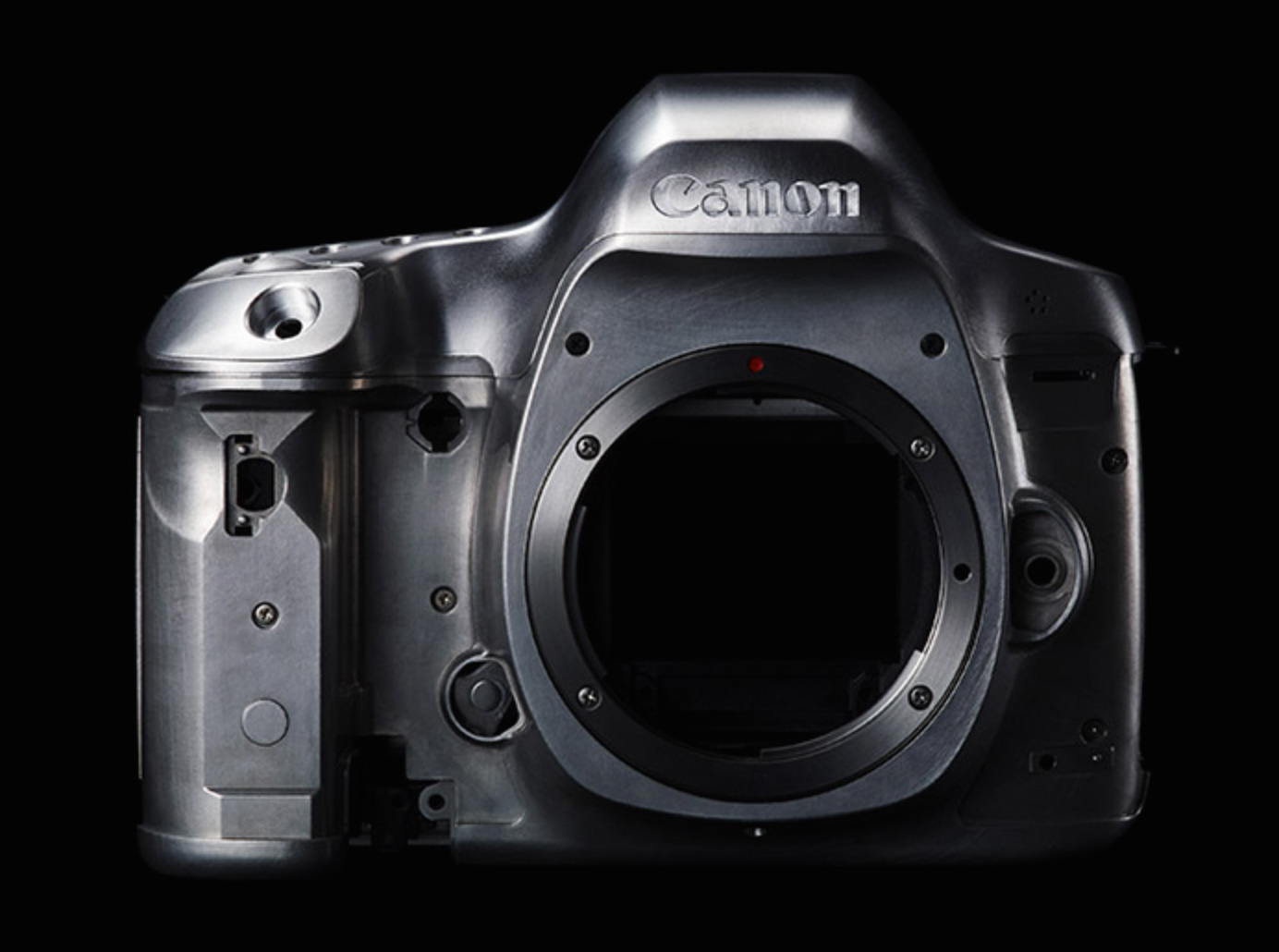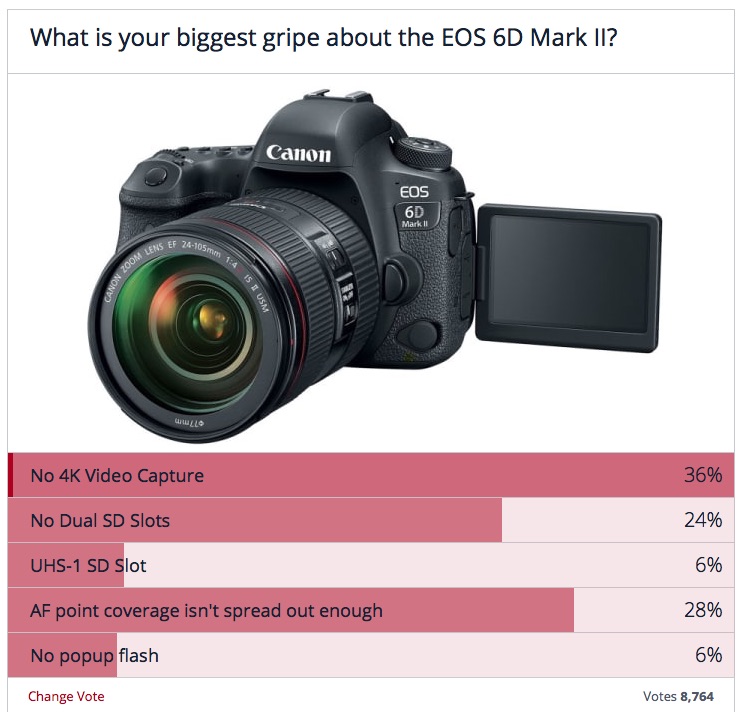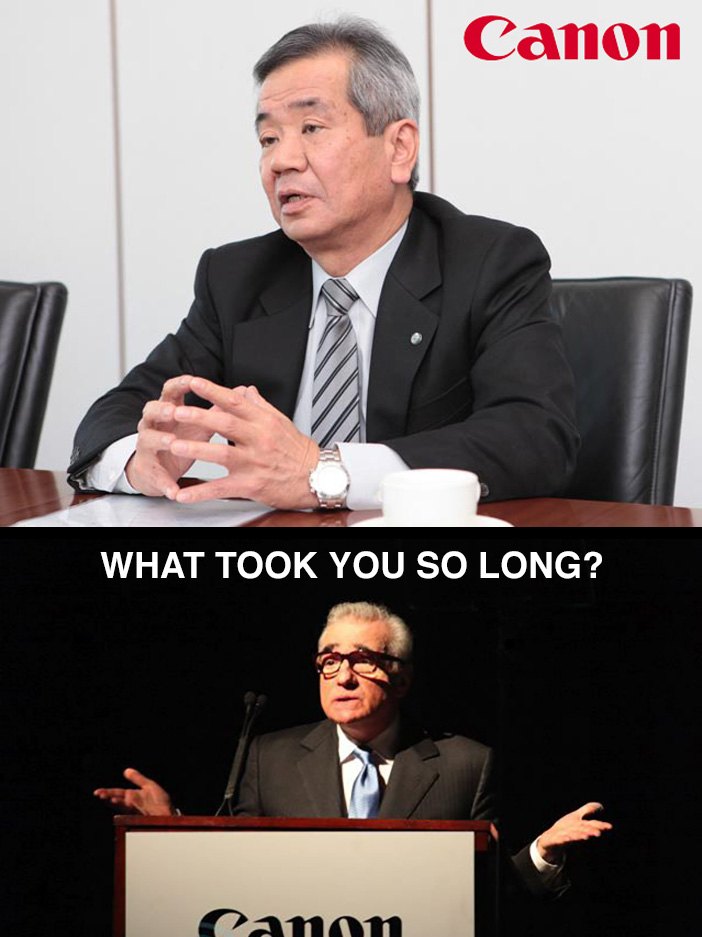
In 2009 Canon introduced a disruptive technology. His name was the 5D Mark II and it was the devil incarnate. At the time they had a pro line-up of video camcorders like the XL2 which were used by filmmakers all over the world. Canon’s 60+ year old management probably thought they’d just killed an entire business, by accident, with a consumer DSLR.
So spare a thought for the 85 year olds whose pacemakers must have been in overdrive as they dreamt up Cinema EOS.
This, along with intentionally crippling video on their DSLRs was a sure-fire way to save their pro camcorder business.
If it let Sony and Panasonic in the door, then so be it.
It begs the obvious question…
Does Canon’s reluctance to once again push the video specs on their DSLRs all stem from this traumatic incident?
Above: a large 36% of Canon photographers at Canon Rumors (a non-video site) are upset about the lack of 4K on the 6D Mark II
Technical
Let’s suggest Sony, Samsung and Panasonic make very efficient 4K chipsets. They are leading consumer electronics companies with top of the range factories. Canon, as a photographic company, probably does not have the same access to chipmaking technology for the same cost as Sony and Samsung. The Panasonic GH4 back in 2014 shot 4K without breaking into a sweat, on a marathon run on one small battery. The Samsung NX1 shot nearly 7K from a 28MP sensor at the same time as downscaling it cleanly to Cinema 4K and encoding it with the most computationally intensive codec currently in existence (H.265).
Now in 2017 these parts are as ‘cheap as chips’ and common place even on phones. This tech is now 3 years old, but what’s odd is that even longer ago Canon offered up a 1D C capable of 4K in a 1D X body, from essentially the same sensor and processor.
The plot thickens! According to Canon it just had an additional heat sink. One day I will take mine apart to see if they were telling the truth. Identical hardware with a firmware change is far more likely.
The 1D C does not overheat, but it doesn’t do H.264 4K either. It relies on a computationally much less intensive MJPEG codec. Either way, you’d think Canon could have developed that technology in the 5 years since, so that all their DSLRs could shoot 4K without breaking into a sweat, especially as Panasonic were now doing 10bit 4K 4:2:2 inside the confines of a much smaller body for $2000, not to mention 8bit 4K on their $600 consumer cameras.
Here’s what may be going on…
Canon have the image processors, but have a weakness getting the sensor running fast enough.
If you look at the rolling shutter on the 5D Mark IV you will know what I mean, and that is just a 1.7x crop. If they had to read out the entire chip, there wouldn’t be a straight vertical line to be seen.
Their Cinema EOS cameras still can’t do decent slow-mo. Even in 2017, the C200 has extremely soft 120fps 1080p, which doesn’t even hit the performance level seen on the consumer Samsung NX1 of 3 years ago.
Canon’s sensors seem slower than the competition…
That is until you consider the 1D X Mark II with 4K 60p, from a 1.3x crop of the full frame sensor, and much less rolling shutter than the Sony cameras and Samsung NX1.
Clearly they solved the speed issue here with a move to multiple on-chip A/D converters, but it’s a move that has consequences for colour and noise.
I actually find the 1D X Mark II to be a very slight step back from the original 1D X and 1D C when it comes to colour and noise in the raw stills.
They had 5 years to make image quality gains and didn’t do it.
They prioritised the speed gains instead.
This shows that chipmaking is a compromise.
As far as I’m aware the 1D C does the analogue to digital conversion on a dedicated chip, not on the sensor. And it does so very well indeed, but it does not have a super fast readout as a result (no 4K 60p and the rolling shutter is quite high).
You then have to ask, with the sensor up to speed, why isn’t the image processor? The 1D X Mark II and 5D Mark IV stick with an MJPEG codec like it’s all the rage. They don’t even take a full pixel readout off the entire sensor and oversample 4K from it like the Samsung NX1 or Sony A6500. I can’t see an excuse with the 1D X Mark II at 20MP on such a fast sensor.
You would think the 5D Mark IV would also be engineered for speed, but it isn’t. The 30 megapixel count is not far off the 28MP NX1, the Samsung sensor runs much faster to offer a 6K full pixel readout with no extra crop factor.
On the Fuji X-T2 and X-T20 you will notice that one crops the sensor a little bit for a faster readout, to improve rolling shutter (X-T2) whereas the other doesn’t crop the sensor but has an A6500-like rolling shutter skew.
I can only hope Canon bring out an affordable 1D C successor with the very fast 1D X Mark II sensor, albeit with a proper codec like ProRes. But it probably isn’t going to happen. Not for under $10,000.
Which brings me to…
Politics
Canon assume that if they start offering Dual Pixel AF, tilt-touch screen, full frame and 4K all at once, not only will there be no need to buy their next DSLR after it, there will be less need to get a C200.
This is popycock.
If the 6D Mark II had 4K and no crop at $1999 I would have been all over it.
C200 owners are C200 owners.
The rest of us want DSLRs and mirrorless cameras.
Something else is going on that’s strange, because it’s not just 4K they are removing like it’s funny.
The 6D Mark II still doesn’t do an acceptable standard of 1080p!
This again points purely to politics.
The codec is a step backwards from the old camera and it still doesn’t solve moire and aliasing, something the 5D Mark III did back in 2012.
In fact the number of Canon cameras with moire and aliasing is in general astoundingly high. Even the 1D X Mark II’s 1080p isn’t that great.
The camera can cleanly oversample a beautiful 1080p image from the 4K output of the sensor and send it over HDMI.
The same picture is being blocked from going to the internal codec and card slot.
The 1D C has better 1080p, especially in its Super 35mm mode which Canon for some reason ‘forgot’ to include on the 1D X Mark II. That didn’t stop Canon reps touting it as a replacement but then some reps, of all companies, have so often been slippery with the truth for the sake of sales.
The 5D Mark IV’s 1080p looks like it has had the digital low pass filter which cured the 5D Mark III’s moire, flat out removed. It’s not the removal of an optical low pass filter that brings moire to video on DSLRs like it does with stills, it is the pixel binning method used and the image processing. On the 5D Mark III, Canon chose a method that would minimise the moire, and on the 5D Mark IV they purposefully did not.
The EOS M5 and EOS M6 mirrorless cameras shoot dismal 1080p with a lot of softness and moire. So does the Canon 80D. So does the 6D Mark II.
When you crack open a Canon DSLR with Magic Lantern, you will see that the image coming off the sensor is MUCH sharper and more detailed than what Canon ends up delivering to the card in the stock video mode.
So something very odd indeed is going on at Canon HQ and I think as customers we deserve an explanation…
And if not an explanation, then Canon customers deserve a camera we may actually want to buy for video that isn’t $12,000… and is competitive with what Sony and Panasonic are doing for $1000-$3000.






